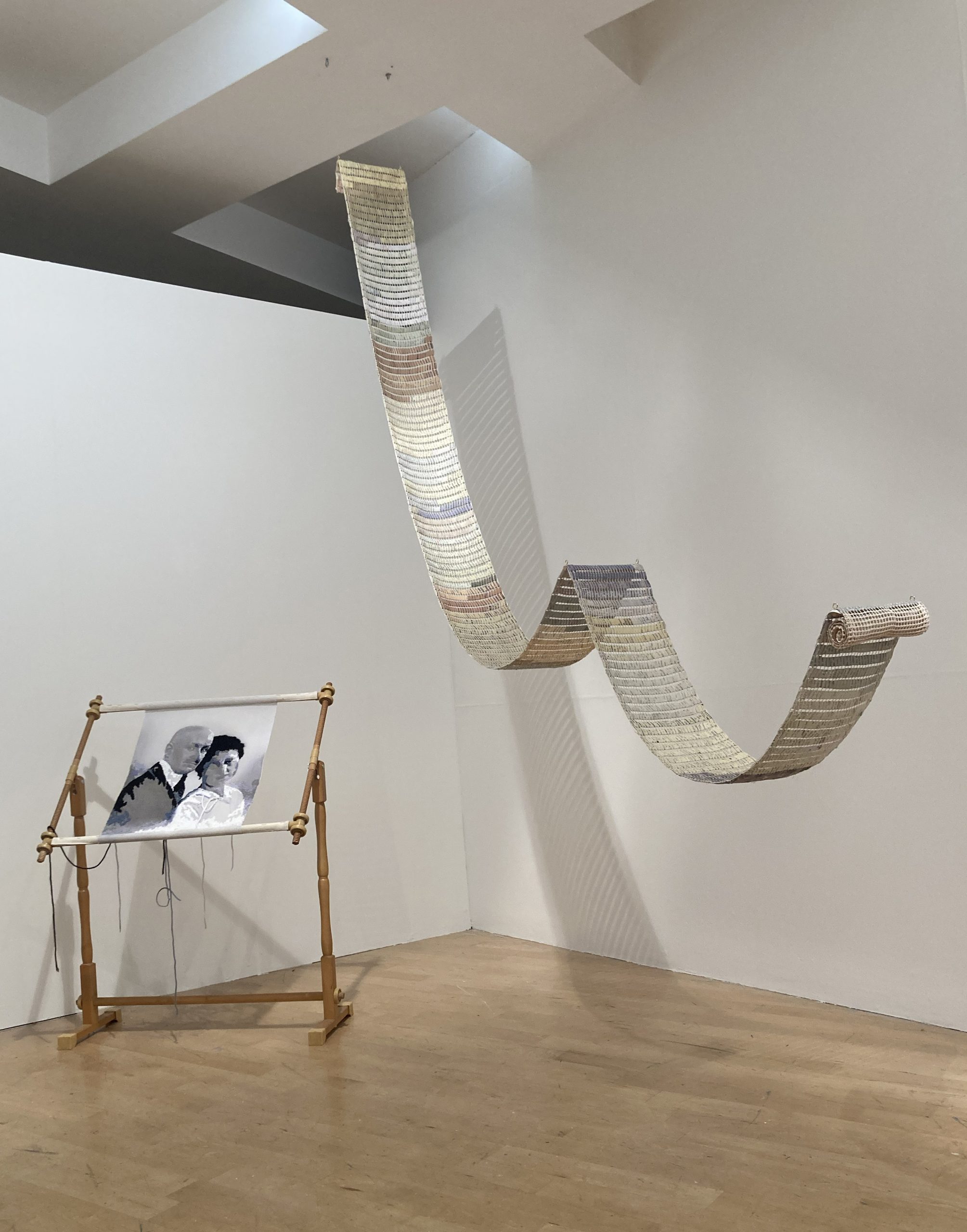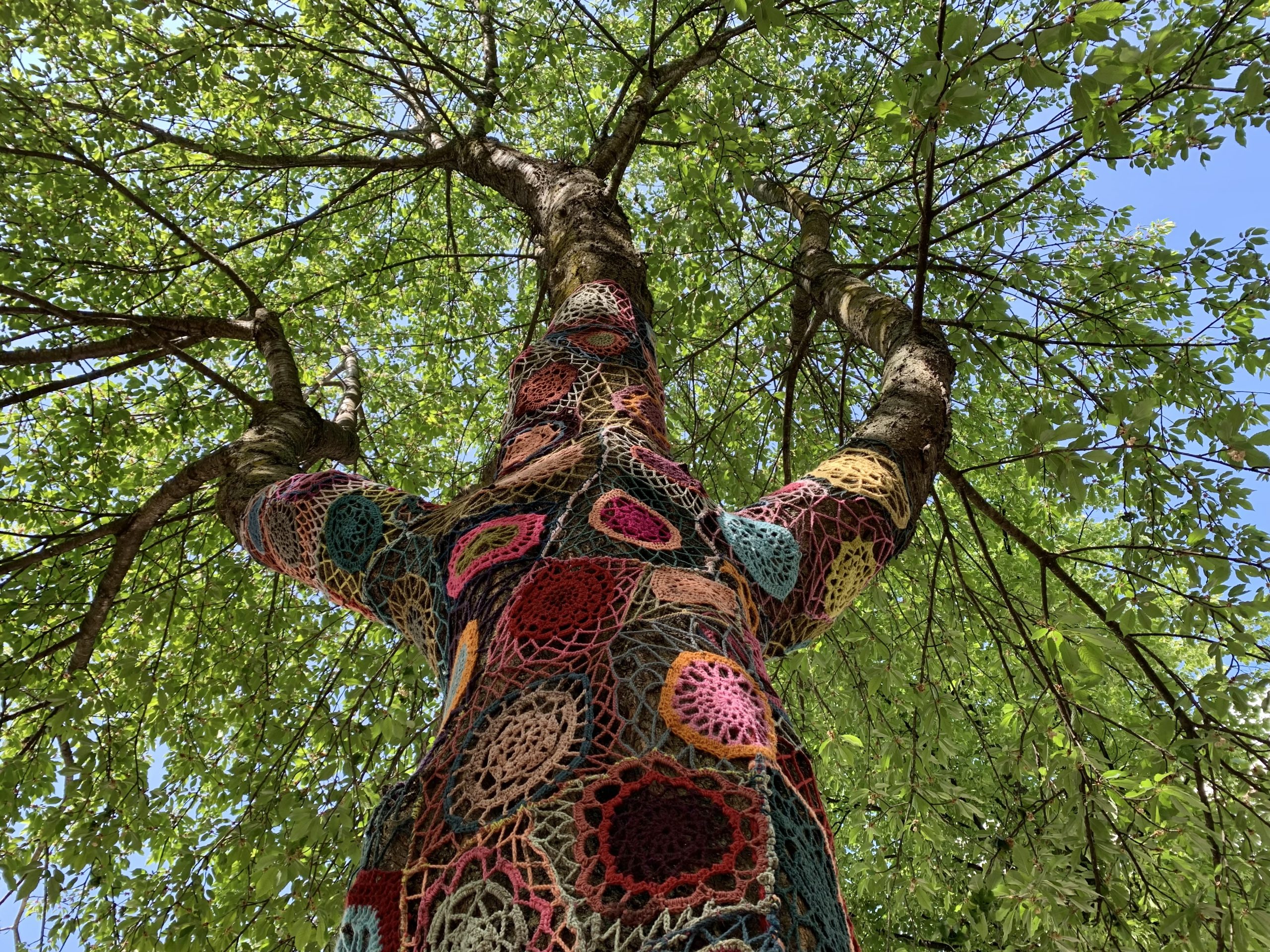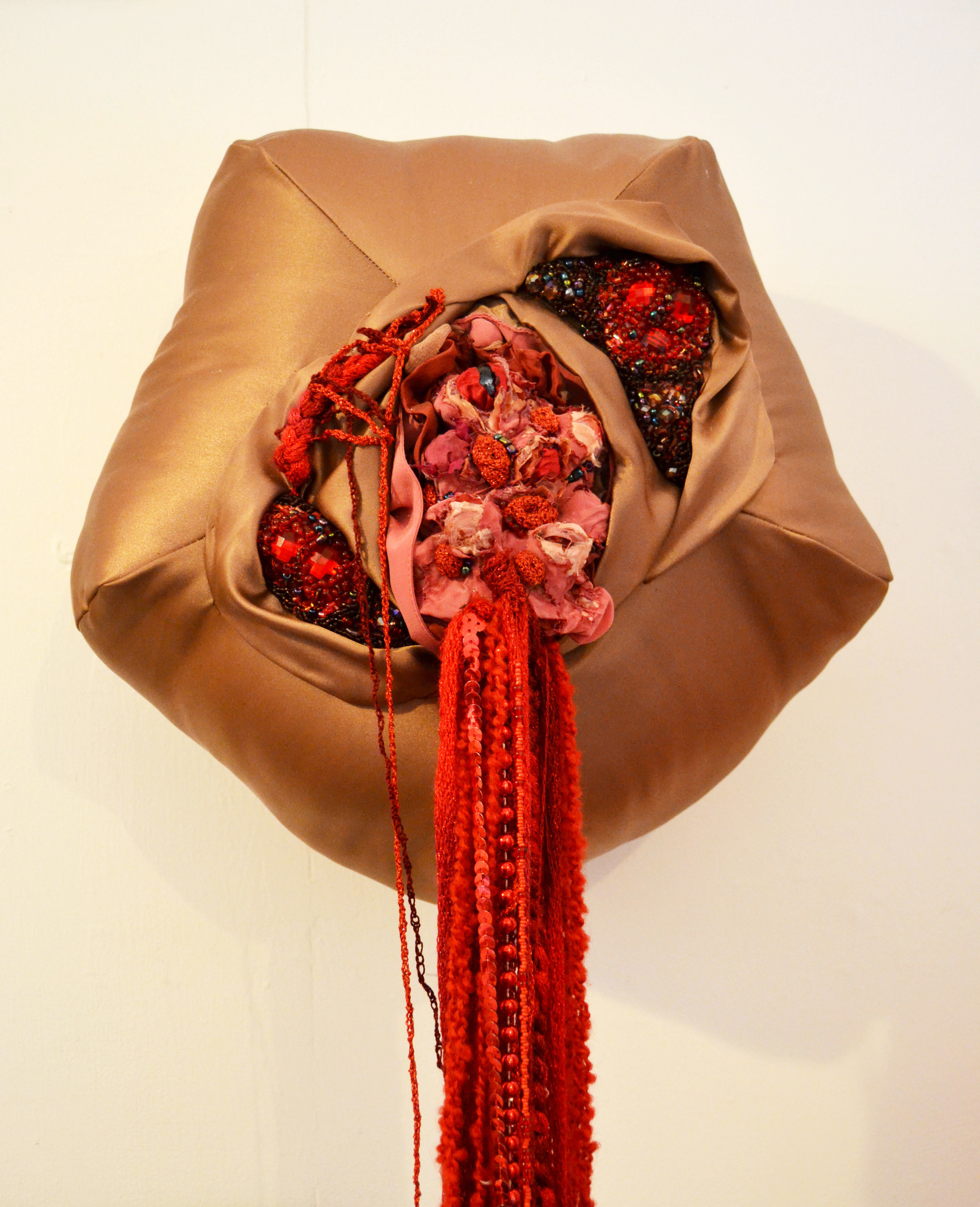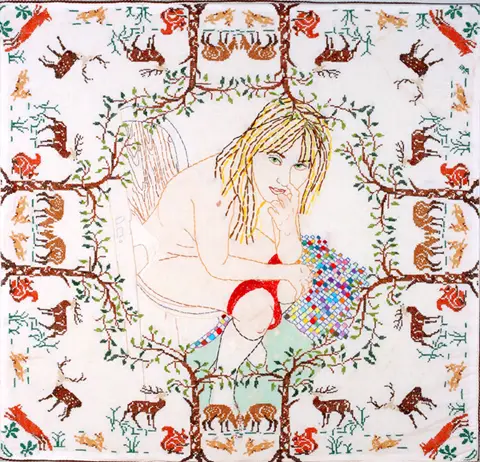Laura Nathan is a contemporary textiles artist and facilitator who explores identity, heritage and wellbeing, resulting in a greater sense of who we are, how we feel and our place in the world.
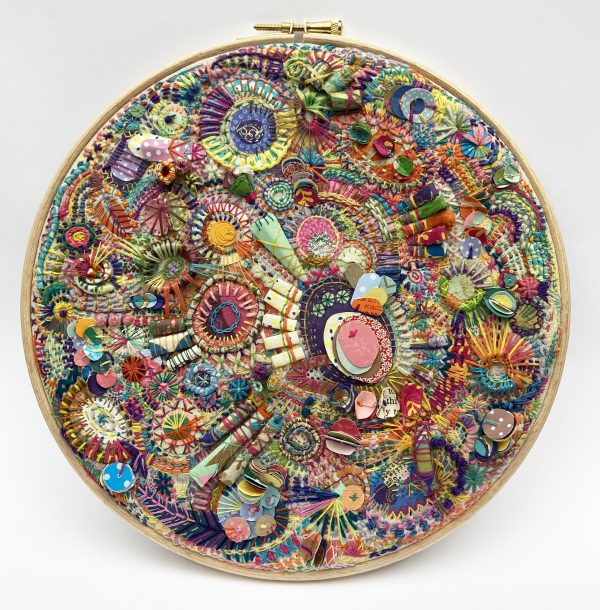
“Art has always been my greatest communication tool, helping me untangle feelings and weave narratives. It has also equipped me with the creative language to work with others. My work is shaped by my cultural identity, and I feel a strong connection towards using symbolic materials including historical documents and fabrics passed down from generations before.”
I first met Laura back in 2020. I began volunteering at visual arts charity Venture Arts and Laura was not only the volunteer coordinator, but a great mentor to me. I have always looked up to Laura’s creative practice and the values she holds within her work, so it was an absolute pleasure to interview her for our blog.
How did your technique evolve?
I’ve always begun with the concept, and I then consider the technique. I started off studying Fine Art as I thought this route would push me the most conceptually. However, before long I felt a void and I missed exploring ideas by playing with materials.
I transferred onto the Embroidery Degree at Manchester School of Art which was the perfect balance between Fine Art and Textiles. Throughout the degree I developed a sensitivity to using symbolic materials and an example of this was the piece “A Tailor’s Story” where I embroidered my late grandfather’s Holocaust Testimony into tailor fabrics. Creating this piece highlighted the importance of exploring personal stories through my work.
Combining fine art and embroidery can have some really interesting results. Slow crafts like hand embroidery can be rigid in practice due to the tradition that surrounds the technique. When combining a fine-arts perspective, the boundaries of embroidery are pushed into new realms, as seen in Laura’s work.
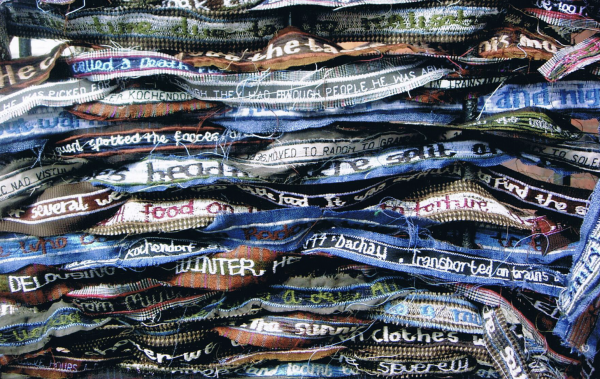
For my final degree piece, I adopted materials that weren’t textiles based which sounds odd for an embroidery student! However, I chose materials that fitted the most conceptually. I created 20,000 handmade cubes of soap and hair and this piece explored feelings surrounding my heritage, generational trauma, and anxiety.
I gained comfort in the laborious obsessive process, and it was becoming evident that my work involved the creation of many individual elements which come together to form a mass.
In 2007 I gained an MA in Art As Environment which helped me further refine my interest in working with people to share their narratives. This is something that is still present in my work 17 years on.
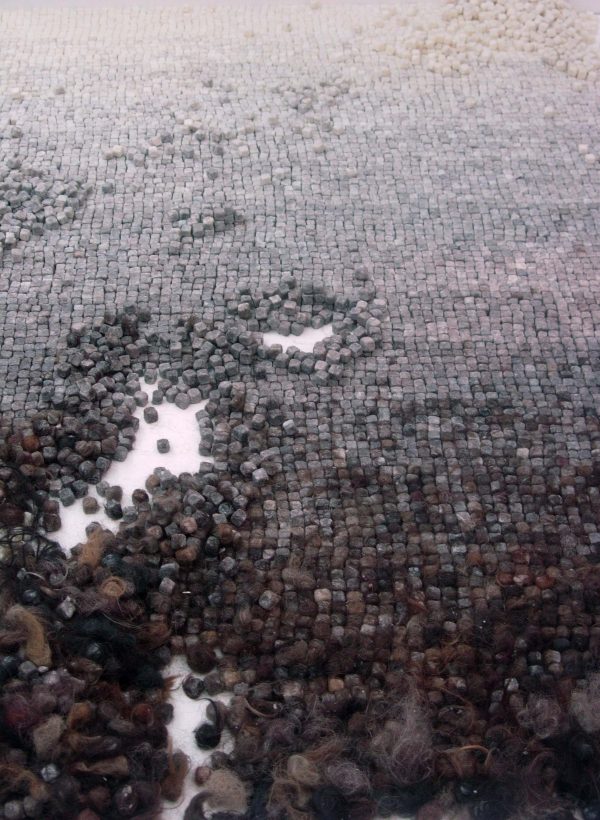
I’m proud that I am still able to maintain this balance and amongst other freelance projects, I am a Textiles facilitator for the Manchester based visual arts charity Venture Arts. Here I support people with learning disabilities to develop their own art practice, and the artwork is exhibited both nationally and internationally.
It’s inspiring to see Laura use unconventional materials with such intuition. It can be easy to forget but many of the materials we see around us can be considered textiles materials. The results can be truly innovative when those boundaries are pushed.
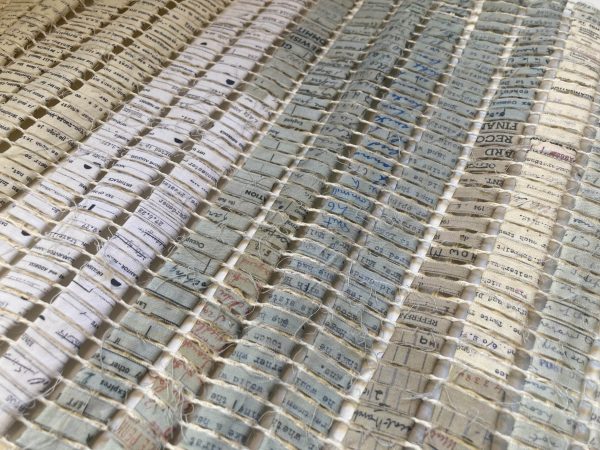
In a recent piece created during the Venture Arts residency “Narratives” I created a 4m long woven structure incorporating my grandparents’ Holocaust related documents dating from 1939-1964.
Onto fabric I printed documents including Concentration camp records and refugee documents. I then cut them up line by line and wove them together. This piece took about 500 hours to create, and I would often work on it for up to eight hours at a time barely moving. Producing this piece really took me back to my degree days and the confirmation that the laborious process is of equal value to the end result.
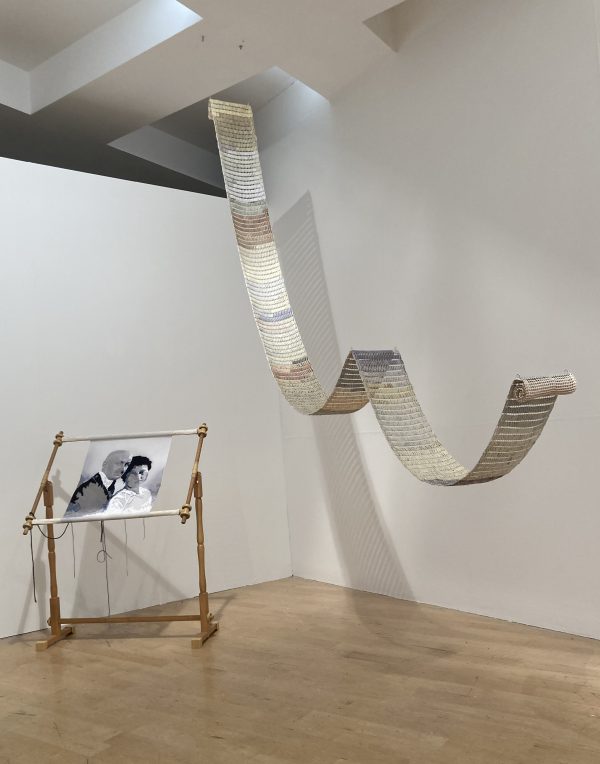
Back in January, I had the opportunity to see this work exhibited at The Lowry in Salford Quays. It can be difficult to consume art such as this in a public space, and the subject created a strong emotional response from those in the gallery.
Thoughtfully, the piece was hung in a more private corner, creating an opportunity for quiet contemplation of the journey Laura’s family had taken. The way the tapestry was draped emphasised the delicate nature of the hand-crafted piece and evoked complexed mixed feelings of looking at beautiful artwork, coupled with the distressing subject matter that intertwined it.
Where do you think your creativity is taking you?
My creativity helps me process feelings. It’s my strongest communication tool; and when I can’t find the words to articulate how I’m feeling or if I’m anxious, creating helps. An example of this was during the COVID-19 pandemic, especially navigating lockdowns with young children.
The more anxious I became, the more fidgety and unsettled I felt. I needed to transfer my anxious energy into something constructive and one evening without much thought I started cutting shapes out of paper and stitching them down. I continued embroidering into this nightly, and I started grabbing small windows of time during the day too.
Sewing focused and rationalised my thoughts, calmed me down and provided escapism. I was able to turn anxiety into something positive and ten months down the line I felt content that every single space was filled.
The piece “Busy Hands” became a symbolic reminder of the importance of carving out time to create. Whenever I need some headspace or time to reflect, sewing in this mindful way really helps.
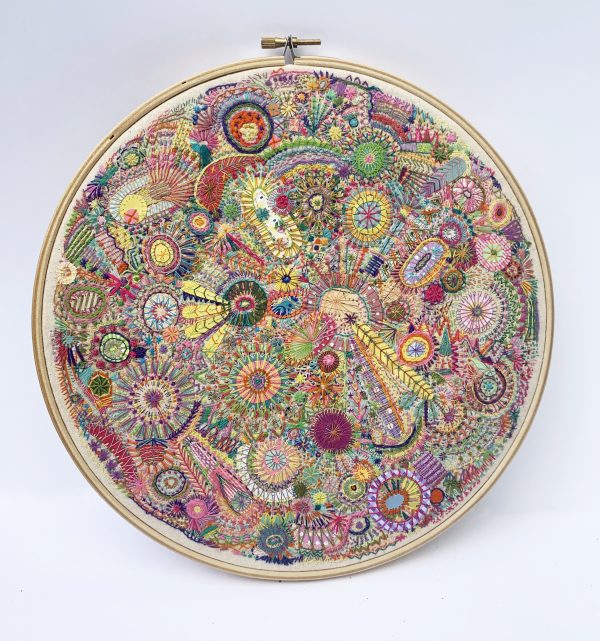
Looking forward; I either create my own work or I support others to develop their own
creativity. However, I would really love to work on more ambitious collaborative projects working alongside others to share collective stories collectively. I think this could be a very powerful experience.
Lockdown was very much a collective experience even though it may not have felt this way being so isolated from our peers. The anxieties that accompanied many were unprecedented so it is no wonder there was a huge and documented gravitation towards slow crafts to stay calm and grounded.
Laura’s work is a perfect example of getting lost in your artwork to find solace and comfort during distressing periods of time. Much of this journey was shared on her Instagram.
What other artists inspire you?
Whilst studying my masters I was inspired by Shelley Sacks piece: ”Exchange Values” She created 20 stitched ‘sheets of skin’ from 20 boxes of Windward Island bananas. She then traced each box of bananas back to its origin in the Caribbean and recorded the voices of the growers. These recordings accompanied each sheet of skin.
This piece was such a powerful example of using art as a tool to give people a voice and to encourage audiences to question issues surrounding global trade and our social responsibility.
What is your favourite tool to use in your practice?
I have three favourite tools. Firstly, my heart as I need to connect emotionally with my subject matter. Secondly my head, to help me consider the most effective way to explore the concept. Finally, a sewing needle. Most of my work is constructed by hand which reflects the laborious hands-on approach and personal connection with my work. The piece below is a good example of how I use my three tools.
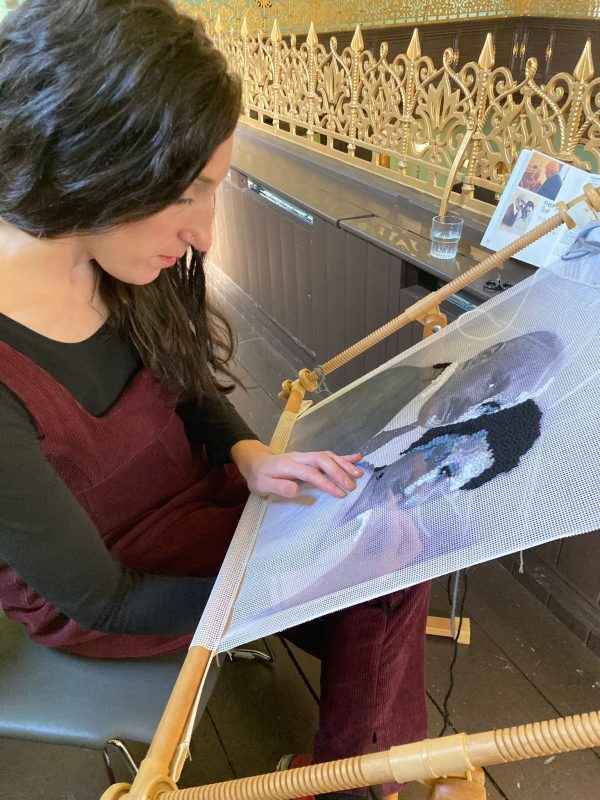
Onto tapestry fabric I printed the only picture my grandma was able to bring to England with her of her parents in 1939. To enhance the personal connection, I used my grandma’s tapestry frame and her yarns to embroider into this picture. I felt emotional creating this work, connecting with my grandma through the materials she used to work to create with.
Can you share one creative tip with our readers?
Always create with integrity by looking within and connecting emotionally. Once you feel connected, take the time to experiment with the most symbolic ways to express your concept. By considering materials and technique, and through evoking the senses impactful and meaningful work can be created.
One last thing…
I created this piece for “Stitch Your Story” which was a collaboration exhibition curated by Mr X Stitch for the 2021 British Textiles Biennial. This piece is very important to me as creating this piece inspired me to revisit my heritage creatively after taking time out of my own practice to focus on my young children. The piece reflects my grandmother’s journey from Germany to England on the Kindertransport programme.
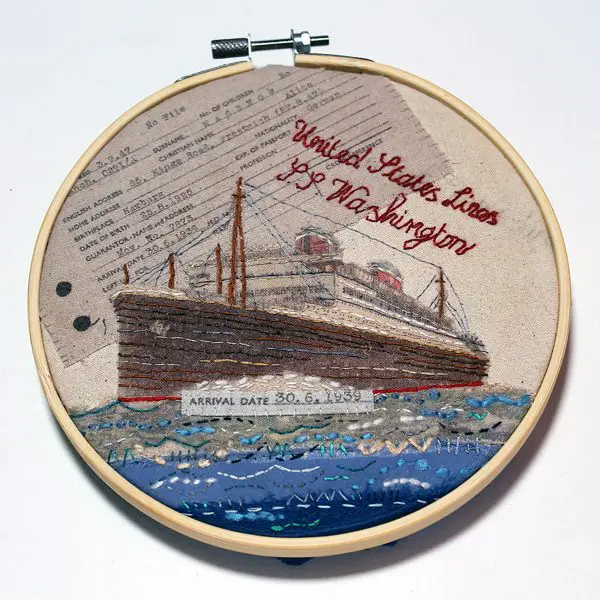
I feel very fortunate to know and work alongside Laura and it has been truly inspiring to hear, in her own words, the story behind her journey as an artist and the work that has been created across this time. Laura continues to grow as an artist and we cannot wait to share her continuing journey here at Mr X Stitch.
If you would like to see more of Laura’s work you can follow her on Instagram or head to her website.

